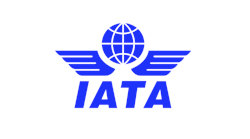In less than four years, operators of aircraft face an important deadline: install Automatic Dependent Surveillance-Broadcast (ADS-B) equipage or be excluded from significant blocks of airspace in the U.S.
As of February 1 of this year, 19,361 general and commercial aviation aircraft were ADS-B equipped. The good news is that this is a 4.6 percent increase over the 18,507 aircraft equipped as of January 1, and also a significant jump from the 10,000 aircraft equipped just one year ago. General aviation makes up the majority of these equipped aircraft. Now for the bad news: With the FAA estimating that 100,000 to 160,000 U.S. general aviation aircraft will need to be equipped by the January 1, 2020 deadline, our industry still has a long way to go to make sure everyone who needs to be, is in compliance with the FAA mandate.
Why is ADS-B equipage so important? First, it provides better surveillance capabilities, especially at lower altitudes. This is especially important as the number of unmanned aerial vehicles continues to rise. In addition, free in-cockpit weather and traffic give operators greater situational awareness, further enhancing safety.
While the FAA provided 10 years for manufacturers to develop equipment solutions and operators to upgrade their aircraft, we still need more traction. In fact, the FAA has felt so strongly about the need for equipage that FAA Deputy Administrator Michael Whitaker convened the Equip 2020 Working Group in 2014 to find solutions so as to encourage ADS-B adoption and address regulator-imposed challenges to equipage.
General aviation manufacturers have responded by introducing dozens of products to the market and, through competition, have dramatically reduced equipment pricing — some offer software upgrades for as little as $1,200, and many equipage options are available for purchase in the $2,000-$4,000 range. However, some operators still remain hesitant to equip, holding out some unrealistic hope that a cheap hand-held ADS-B Out device will magically appear in the marketplace that complies with FAA standards. As a result of this indecision, these operators are likely to face ever-escalating installation costs as time marches on.
As the 2020 deadline nears, demand for equipage is likely to soar, driving costs up as installation lines grow longer. In addition to light general aviation aircraft, many commercial and business aviation aircraft need ADS-B equipage as well. Repair and installation stations facing the choice between installing equipment on a turboprop or business jet — which involves more work and generates more revenue — vs, working on a piston aircraft, are likely to choose the larger airplane in a scheduling crunch. As a result, general aviation operators who gamble on waiting until the last minute may well run out of luck, or pay substantially higher costs to get an installation slot. The law of supply and demand is sometimes ruthless.
To encourage ADS-B installations now, the FAA is making it easier to equip. In March, the agency announced new guidelines to streamline the certification and installation process for equipage. It also issued the first Approved Model Lists for Supplemental Type Certificates for rotorcraft, simplifying their path forward for equipage. The FAA is committed to easing installation challenges for each part of the fleet to ensure all operators can meet the deadline.
More than 19,000 operators have already recognized that the benefits of equipping with ADS-B now far outweigh the costs of failing to act. Our hope is that the remaining operators who will need access to ADS-B-mandated airspace also realize the wisdom of joining them — before the clock runs out.
Pete Bunce is president and CEO of the General Aviation Manufacturers Association. For more information visit www.gama.aero.




